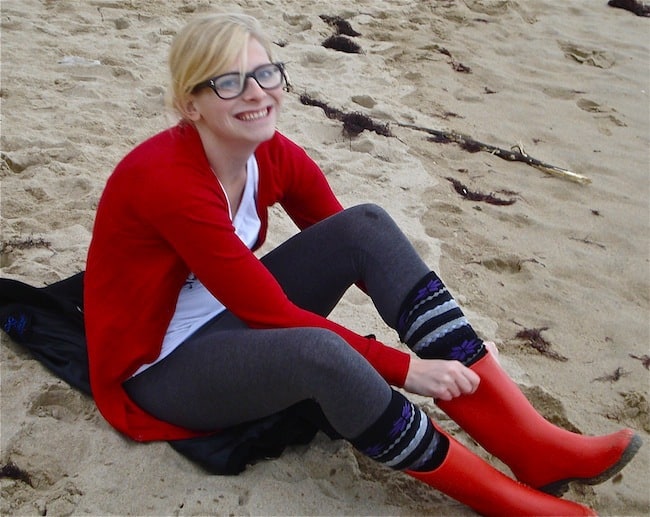
One of my favorite regions in Spain is the Basque Country. Seriously beautiful and seriously misrepresented, I feel like this tiny, unique area is often overlooked and skipped on classic Spain itineraries. People are put off by the distance or the fact that it’s just so different from the rest of Spain, being that they have their own language, Basque, which is linguistically different and unrelated to any other language in the world. Most see that as a challenge, I see it as being pretty damn cool. Luckily, my blog BFFL and blonde twin, Liz from Liz en España and now A Midwestern Life has agreed to share her thoughts with us on the complex region of Spain.
What do you think of when you think of the Basque Country? Have you even heard of it before now?
1. You can’t generalize
There are lots of preconceived notions and stereotypes about the Basque Country. The most prevalent, of course, is that they’re all terrorists. The region’s history with ETA, the Basque independence group, is complicated and has been, at times, bloody. However, the people that live in the Basque Country are on every end of the spectrum. I’ve met Basque-born people who identify as strictly Spanish, and those that vehemently deny any association with Spain and Spanish heritage. Those who went out and celebrated when ETA disbanded, and those who protested. You can’t make assumptions about anyone you meet, and most Basque people are willing to share their views on independence and the Basque Country.

2. It’s bigger than you think
The Basque Country isn’t just in Spain. In Basque, Euskal Herria is formed from four provinces in Spain (Alava, Vizcaya, Guipuzkoa, and Navarra) and three in France. These are the traditional lands of the Basque people, and you sometimes see graffiti that shows 3+4=1, which means the three French provinces plus the four in Spain equal the Basque Country. French Basque country is beautiful, and has some of the best surfing in the world. Check out Biarritz, St. Jean de Luz, and Bayonne if you find yourself there.
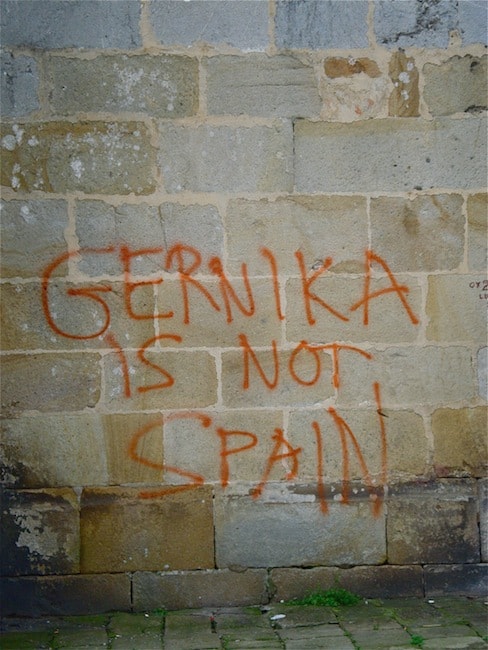
3. That language with all the k’s and tx’s? That’s Basque
If you’re linguistically obsessed, then the Basque Country is a good place to be. Basque (or Euskara) is the language spoken by the Basque people. It is one of the only pre-Romanic languages still in existence today, and no one really knows where it comes from, as it is not related to any other language in the world. It doesn’t sound at all like Spanish, although many modern Basque words have been influenced by Spanish (Txocolate=chocolate, for example). Depending on where you are in the Basque Country, you may or may not hear Basque. When I was living in Bilbao, I didn’t hear it too often, especially since my school taught only in Spanish (which is very rare in the Basque Country). In the smaller villages, it’s more common to hear, as many speak it as a first language. There are also several different dialects of Basque, so the Basque people speak in Bilbao is different from the Basque that is spoken in San Sebastián. Looking for some Basque words to pepper your vocabulary while in the Basque Country?
Hello-Kaixo, aupa
Goodbye- Agur
Thank you- Eskerri asko
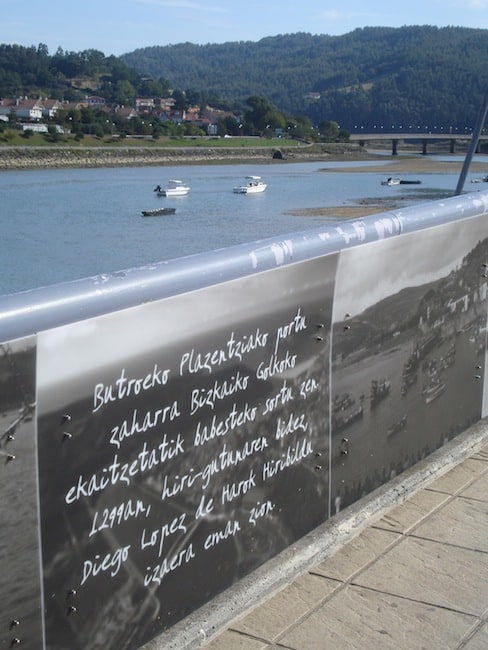
4. It’s more than meets the eye
Many people go to see the Guggenheim in Bilbao, hit the beach in San Sebastián, and call it a weekend. Bilbao is way more than just the Guggenheim. If you want to stick to the Basque theme, there’s the Museum of Fine Arts, the Maritime Museum, and the Basque Museum to keep you busy. San Sebastián has some of the best food in all of Spain, with their pintxos (Basque tapas, more or less) being innovative and daring. Many people don’t even visit Vitoria-Gasteiz, the capital of the Basque Country, which has a picturesque old town and is generally less expensive than the other two cities. There are also countless tiny villages in the mountains and on the beach that kept me bust for years. For example, Getaria, a small fishing village is the home of the Balenciaga museum. Bermeo has San Juan de Gatztelugatxe, a small hermitage situated on an island in the sea.
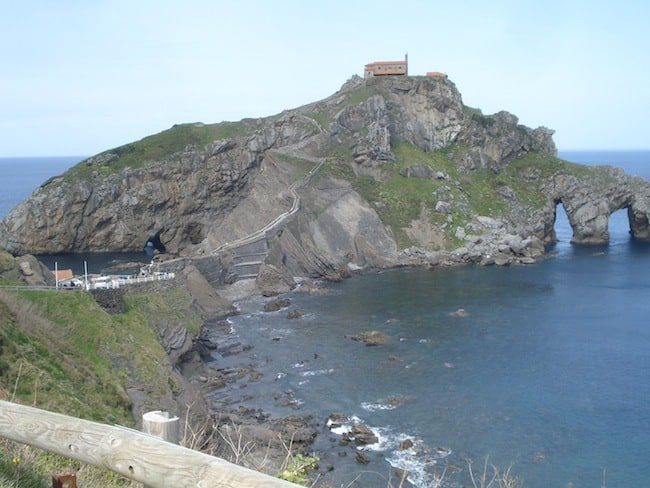
5. It rains. A lot.
Somedays, it seems like all it does is rain in the Basque Country. They even have a word for that light, misty rain that seems to never stop-txirimiri. If you’re planning on spending any amount of time in the Basque Country, you’re going to want to make sure you pack an umbrella. If you’re planning on being there for an extended period of time, you’re going to want to invest in a good, sturdy umbrella. Rain boots are also a good idea, as if you let the rain stop you from getting out and about, you’ll never go anywhere. The rain pays off in the spring and summer, when the mountains become lush and verdant.
Liz is a former Bilbao auxiliar who now resides in St. Paul, Minnesota. Since returning home, she now enjoys being able to do her laundry in less than 2 hours, and being able to wear sweatpants out of the house. Her newest blogging project is A Midwestern Life. Follow her on Twitter today!!
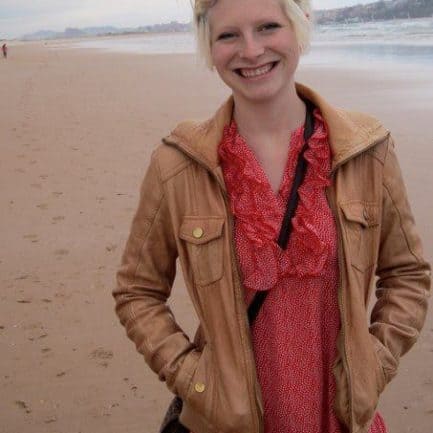
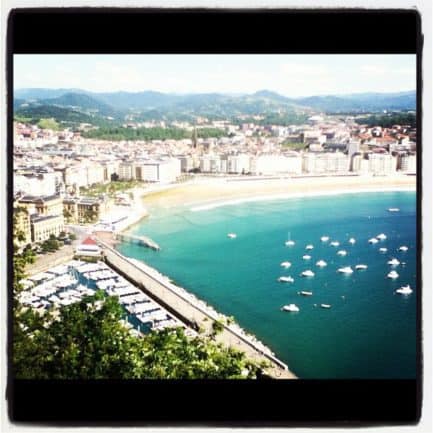
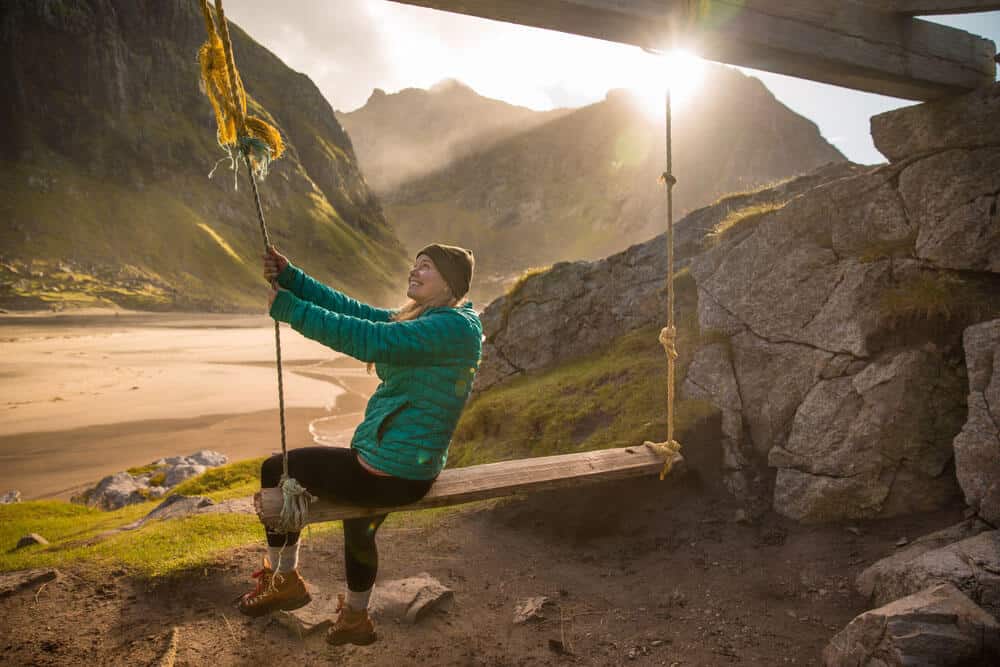
Great post and thanks for spreading the word about this lovely place. I fell in love with it when I first visited many years ago and have since put together a complete travel guide for the entire Euskal Herria (Navarre & The French Basque Country included). Hopefully it can help people plan their trip there and even convince them how amazing it really is. Check it out: http://www.euskoguide.com
Eskerrik asko!
The part about the rain reminds me of how Japan has many different words for different kinds of rain. Basque sounds like a wonderful place, despite the wet weather!
Well, the weather is not that bad. We have our sunny days too, specially in summer.
I’m born and raised in Bilbao, so this is first hand information 😉
Weather is not so bad, it rains only 2 times a year, the first during the six first months, and the second during the rest of the year ! ?
I’ve only stayed there 2 nights (3 including Pamplona), but I love, love, love the Basque Country; San Sebastián is one of my favorite cities in Spain. This post is a great introduction for first-timers to the region, including #1; although not generalizing about people or places is good advice for anywhere you travel, you’re right that Basques have been especially stereotyped in the past.
Have you read The Basque History of the World by Mark Kurlansky, Liz? I’m partway through it right now and am really enjoying this enlightening, fascinating read about how the Basque people came to be who they are today and how their culture, cuisine, etc. was shaped by their connection to the sea and their often-uncomfortable relationship with their Spanish and French neighbors.
In Basque language the name of their ancestor Haytor means “Received from Haya” which correlates to Armenian ‘hay tor’ (“a Grandson of Armenian”). Joseph Karst also mentioned this fact. The ancestor of Armenians, Hayk, indeed, had a grandson, whose name was Pask (in some Armenian dialects Bask). The first time the possible relationship between Armenian name Pask and etnoname of Basques was indicated by N. Marr. It’s interesting that the Basque term for thoroughbred ‘haytoren seme’ means “the son of Haytor”.
All these facts were only the top of iceberg of the greatest secret of the European civilization. The theory of the Armenian origin of the oldest people of Europe has its deep roots in the historical collective memory of Basques and found its reflection in their written sources. As far back as XVI-XVIIcc., the founders of Basque national historiography Garibay, Andres de Posa and Baltasar de Echave considered Armenia the prehomeland (or original homeland) of Basques and tried to prove this on the basis of Basque-Armenian toponymic parallels… Araks (the name of a river in Armenia and in the Land of Basques), Apalar, the mountain in the land of Basques and biblical Ararat, the symbol of Armenians. Moreover, de Posa insisted that Basques are from Armenia. He mentioned that the city Taragona meant “commune of shepherds” and compared it with Armenian Taron, the ancient form of which is – Tarawna.
Sorry but Aitor is not an old name. Aitor is a name that appears in the nobel “Amaia and the basques in the 8th century”. He took this name from the word Aitorrenseme which can be compare with the english nobleman or noblewoman. (There is no gender distinction in the 90% of basque words)
He understood “Aitorren seme” son of Aitor but really means “Aitonen seme” son of grandfather. The writer Agustin Chaho was from Soule (Nowdays under french administration) and was confused by the dialectal variation of the term.
In spite that fact it would be nice to have any idea about our origin.
Great post! País Vasco was one of my preferences for the Auxiliar program. I’ve been to Bilbao, San Sebastián, and Zarautz before, and its always great to learn more about Northern Spain. I’ve enjoyed reading your blog and cannot wait to go to Spain myself!